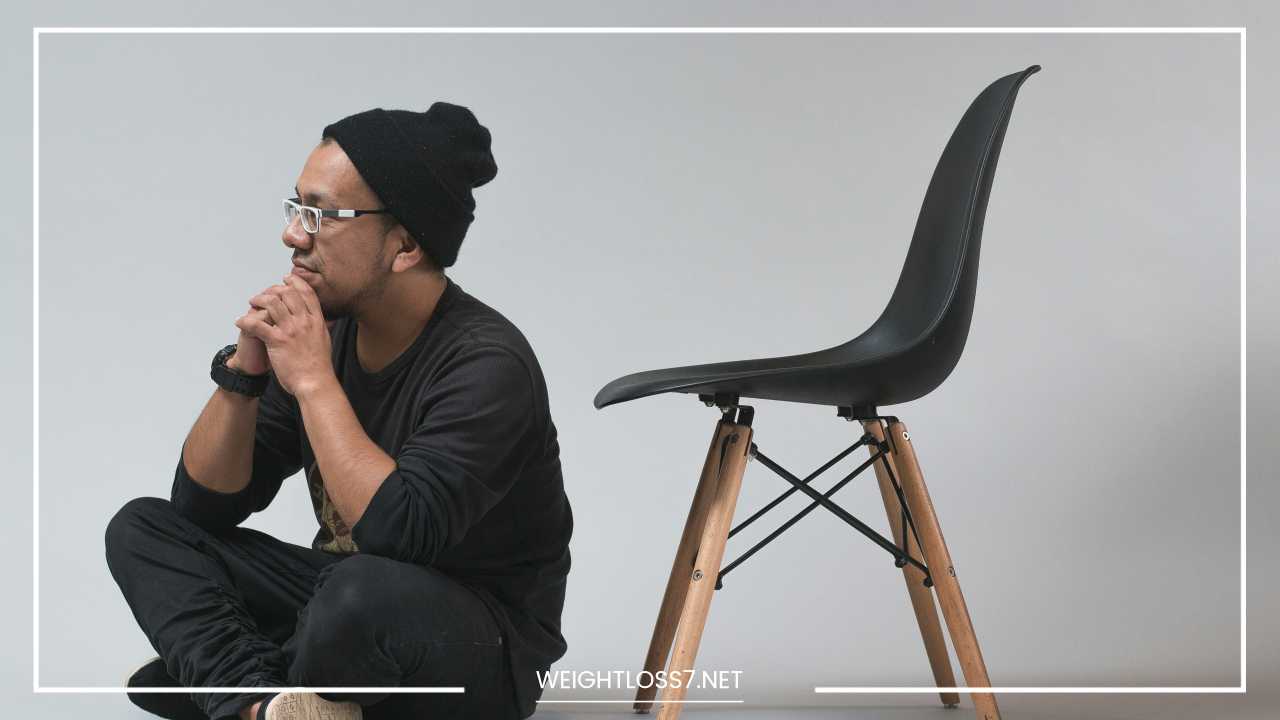Sit Well, Live Well: The Science of Chairs

Chairs
Chair: The Unsung Hero of Your Health
The chair. It’s a fixture in our lives, from the kitchen table to the conference room, a constant companion in our daily routines.
But beyond its basic function of providing a place to sit, a well-designed chair can significantly impact our physical and mental well-being.
In our fast-paced world, where a large portion of our day is spent glued to screens, the chair transforms from mere furniture into a silent influencer of our health.
This comprehensive blog post delves deep into the world of chairs, exploring their impact on posture, reducing the risk of chronic diseases, and even boosting our mood.
The Downward Spiral of Poor Posture
Before we delve into the world of good chairs, let’s understand the pitfalls of bad posture. Spending hours hunched over a poorly designed chair can trigger a cascade of health problems.
The most immediate consequence is pain – neck pain, back pain, and even headaches can all stem from incorrect posture.
Chronic poor posture can also lead to more serious issues. It can compress nerves, leading to numbness and tingling. It can strain muscles, causing them to tighten and fatigue.
Over time, it can even lead to skeletal misalignments like kyphosis (hunchback) and scoliosis (curvature of the spine).
The Science of a Supportive Seat
So, what makes a good chair? The answer lies in ergonomics. Ergonomics is the science of designing products to fit the human body and promote good posture. In the context of chairs, this translates to several key features:
- Lumbar Support: The lower back naturally curves inwards. A chair with built-in lumbar support cradles this curve, encouraging proper spinal alignment and reducing strain.
- Seat Depth: The ideal seat depth allows your thighs to rest comfortably on the seat with a slight bend at the knees. Your feet should be flat on the floor, distributing your weight evenly.
- Seat Height: Adjustable seat height is crucial. When seated, your thighs should be parallel to the floor with your feet flat on the ground.
- Armrests: Properly adjusted armrests help maintain good posture by supporting your forearms and shoulders, reducing neck and shoulder strain.
- Adjustability: The best chairs allow for customization. Being able to adjust the height, seat depth, tilt, and armrests ensures a personalized fit for different body types.
The Benefits of a Throne Fit for Your Body
Investing in a good ergonomic chair goes beyond just comfort. Consider these health benefits:
- Reduced Pain: Sitting with proper posture reduces the strain on your back, neck, and shoulders, leading to a significant decrease in pain.
- Improved Circulation: Good posture improves blood flow throughout the body, promoting overall health and well-being.
- Increased Productivity: Studies have shown that sitting in a comfortable, supportive chair can increase focus and concentration, leading to improved productivity at work.
- Better Mood: Pain can be a major mood-killer. By alleviating pain and promoting comfort, a good chair can actually improve your mood and outlook.
- Reduced Risk of Chronic Disease: There is growing evidence suggesting that prolonged sitting in a poorly designed chair can increase your risk of developing chronic diseases like diabetes, heart disease, and even some cancers. A good chair can help mitigate these risks.
Beyond Ergonomics: Finding the Perfect Chair for You
Ergonomics are key, but choosing the right chair also depends on individual needs and activities.
- Office Chairs: Spend hours at a desk? A high-backed, adjustable ergonomic office chair with good lumbar support is a must. Look for features like headrests and breathable materials for long sitting sessions.
- Task Chairs: These chairs are ideal for shorter periods of focused work. They often have a lower back and are lighter than office chairs.
- Gaming Chairs: Designed for long gaming sessions, these chairs often have bucket seats and high backs for extra support. Look for breathability and adjustability features.
- Dining Chairs: While comfort is important, dining chairs are often used for shorter durations. Choose chairs with good back support and a seat height that allows your feet to touch the floor comfortably.
- Kneeling Chairs: These chairs allow you to sit in a kneeling position, which can help strengthen core muscles and improve posture. However, they may not be suitable for everyone and can take some getting used to.
Standing Desks: A Complementary Approach
Standing desks have become increasingly popular in recent years, offering an alternative to traditional seated work.
While not a complete replacement for a good chair, standing desks can help reduce the amount of time spent sitting throughout the day.
Here are some key considerations for using a standing desk:
- Proper Height: The desk height should be adjusted so your elbows rest at a 90-degree angle when standing.
- Anti-Fatigue Mat: Standing for long periods can be tiring on your legs. An anti-fatigue mat can provide additional comfort and support.
- Alternate Sitting and Standing: Don’t try to stand for your entire workday. Aim to alternate between sitting and standing throughout the day in short intervals.
Ergonomics Beyond the Chair: Creating a Supportive Workspace
Ergonomics isn’t just about the chair; it’s about creating an entire workspace that promotes good posture and reduces strain. Here are some additional tips:
- Monitor Placement: Your computer monitor should be positioned at eye level, directly in front of you. This helps prevent neck strain from looking up or down at the screen.
- Keyboard and Mouse Placement: Your keyboard and mouse should be positioned so your wrists remain straight while typing or using the mouse. Consider a wrist rest for added comfort.
- Lighting: Proper lighting is essential for reducing eye strain. Avoid glare on your screen and ensure adequate ambient light.
The Holistic Approach to Good Posture
Investing in a good chair and creating an ergonomic workspace is a great start, but it’s not a magic bullet. Here are some additional tips for promoting good posture throughout the day:
- Get Up and Move: Sitting for extended periods, even in a good chair, is detrimental to your health. Set a timer to get up and move around every 30-60 minutes. Stretch, walk around, or even do some quick desk stretches.
- Strengthen Your Core: A strong core helps support your spine and improve posture. Include core strengthening exercises like planks, bridges, and side planks in your workout routine.
- Mind Your Body Awareness: Throughout the day, take conscious breaks to check your posture. Are you slouching? Are your shoulders rolled forward? By becoming more aware of your body position, you can make adjustments throughout the day.
- Stretching: Regular stretching can help improve flexibility and reduce muscle tension that contributes to poor posture. Focus on stretches for your neck, shoulders, back, and hamstrings.
- Yoga and Pilates: Yoga and Pilates are excellent forms of exercise that promote good posture, flexibility, and core strength. Consider incorporating these practices into your fitness routine.
The Chair: An Investment in Your Well-Being
A good chair is more than just a piece of furniture; it’s an investment in your health and well-being. By choosing an ergonomic chair that supports your body and promotes good posture, you can significantly reduce pain, improve circulation, boost your mood, and even lessen your risk of chronic diseases.
Remember, ergonomics is a journey, not a destination. By incorporating the tips and strategies outlined above, you can create a work environment that supports your body and allows you to thrive. So take charge of your posture, invest in a good chair, and make your well-being a priority. Your body will thank you for it.
The Evolution of the Chair: A Throne Through Time
Chairs have been a part of human civilization for millennia, evolving alongside our social and technological advancements.
This brief exploration delves into the fascinating history of the chair, showcasing its transformation from a symbol of power to an essential tool for comfort and well-being.
Early Seats of Power:
The earliest evidence of chairs dates back to ancient Egypt and Mesopotamia, where simple stools and thrones were crafted from wood and stone.
These early chairs were reserved for royalty and high-ranking officials, serving as a symbol of authority and status. The intricate carvings and decorations on these chairs often reflected the power and prestige of their owners.
The Rise of the Functional Chair:
As civilizations progressed, so did the use of chairs. The Greeks and Romans began to develop more practical and functional chairs, incorporating features like backs and armrests. These chairs were used for a variety of purposes, from dining to relaxing.
The Middle Ages and the Evolution of Comfort:
During the Middle Ages, chairs remained a symbol of status, but they also began to be seen as a way to improve comfort.
Upholstered chairs with padded seats and backs became more common, particularly among the wealthy. However, chairs were still a luxury item for most people, who continued to use stools and benches for everyday use.
The Industrial Revolution and Mass Production:
The Industrial Revolution ushered in a new era of chair design and production. Mass production techniques made chairs more affordable and accessible to the general public.
The invention of new materials like steel and plywood allowed for the creation of lighter and more durable chairs.
The 20th Century: The Rise of Ergonomics
The 20th century saw a growing focus on ergonomics in chair design. As office work became increasingly common, there was a need for chairs that would support good posture and prevent discomfort.
This led to the development of ergonomic chairs, which are designed to minimize strain on the back, neck, and shoulders.
The Future of the Chair: Innovation and Technology
The evolution of the chair continues in the 21st century. Today, we see chairs incorporating new technologies and materials to further enhance comfort and support. Here are some exciting trends in chair design:
- Adjustable Lumbar Support: Chairs with adjustable lumbar support allow for a personalized fit and optimal spinal alignment.
- Active Seating: These chairs encourage movement and improve core strength by incorporating features like rocking bases or balance balls.
- Sustainable Materials: Eco-conscious consumers are driving the demand for chairs made from sustainable materials like bamboo and recycled plastic.
- Smart Chairs: The integration of technology into chairs is on the rise. Imagine chairs that can monitor your posture, adjust temperature, or even provide a gentle massage!
Final Word: A Seat for Every Need
From the simple stools of ancient civilizations to the high-tech marvels of today, the chair has come a long way. As our understanding of ergonomics and wellness continues to evolve, so too will the design of chairs.
The future holds exciting possibilities for chairs that are not only comfortable and supportive but also personalized and adaptable to our individual needs.
So next time you take a seat, take a moment to appreciate the rich history and ongoing innovation behind this humble yet essential piece of furniture.

















